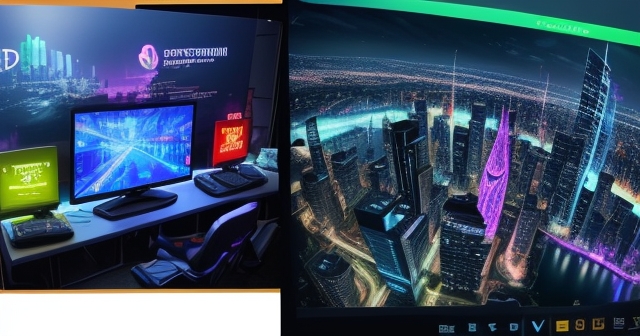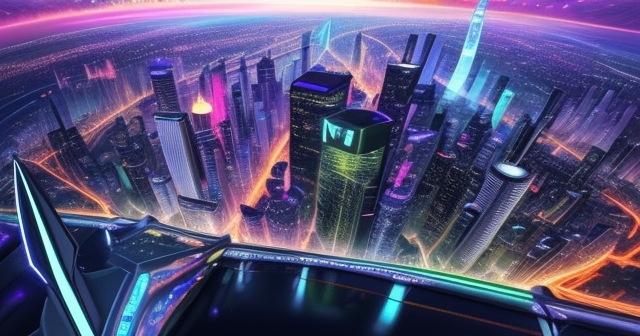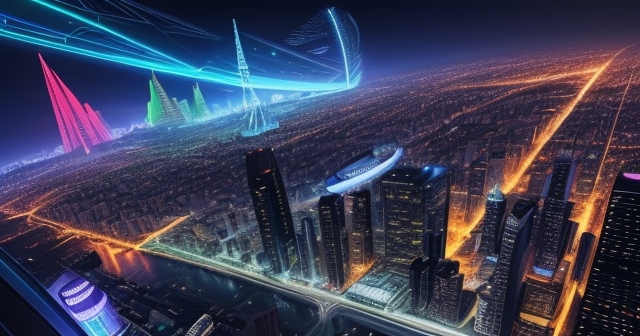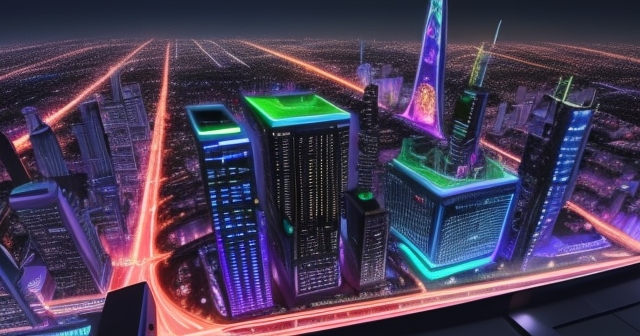Understanding Roblox’s Competitive Landscape: A Deep Dive for Investors
Welcome, investors. Navigating the dynamic world of technology stocks requires a keen understanding of the competitive forces at play. Today, we’re turning our analytical lens towards Roblox Corporation (RBLX), a fascinating company that has carved out a significant niche in the virtual world and gaming creation space. Millions of daily users engage with experiences built on its platform, making it a household name for many, especially younger demographics. But in the fast-paced digital economy, success quickly attracts rivals. For you, as an investor or trader considering RBLX, comprehending who its competitors are – and how effectively they challenge Roblox – is absolutely critical to evaluating its future prospects.
Think of the digital realm as a vast, bustling city. Roblox built a unique district within it – a vibrant, user-generated metropolis where creativity flourishes. However, this city is interconnected, and other powerful players are constantly expanding, building their own districts, or even attempting to replicate elements of Roblox’s success. Our goal in this exploration is to map out this competitive city, identify the major inhabitants, and understand the nature of their rivalry with Roblox. We will move from the broad landscape to specific financial comparisons, helping you build a robust framework for your investment decisions.

When we talk about Roblox’s competitors, it’s not a simple case of one company directly mirroring another. The competition is multifaceted, spanning various sectors and business models. Roblox operates at the intersection of gaming, social media, user-generated content platforms, and the burgeoning metaverse concept. This means it faces challenges from several angles, making its competitive landscape complex and dynamic.
- Roblox faces competition from publicly traded companies in technology and software industries.
- Direct competition exists from other gaming platforms and creation engines.
- Roblox, as part of a larger digital ecosystem, competes for user engagement with major tech giants.
Firstly, we have publicly traded companies within the broader technology and software industries. While not all of these create direct gaming or social platforms, they compete for developer talent, cloud infrastructure, digital advertising spend, and even investor attention. Companies like Shopify (SHOP), CrowdStrike (CRWD), AppLovin (APP), Infosys (INFY), NetEase (NTES), Atlassian (TEAM), Snowflake (SNOW), Electronic Arts (EA), Cloudflare (NET), and Veeva Systems (VEEV), listed in some market analyses alongside RBLX, highlight this diverse peer group. While Shopify might seem distant as an e-commerce platform provider, it represents a large, successful tech company vying for market share and investor capital within the same general sector. Electronic Arts, on the other hand, is a direct competitor in the traditional gaming space, capturing user time and entertainment budgets.

Secondly, and perhaps more directly, Roblox competes with other gaming platforms and creation engines. This includes major players like Epic Games (Fortnite) and Unity Technologies, as well as Mojang Studios (owned by Microsoft, creator of Minecraft). These platforms offer alternative environments for playing and, increasingly, for creating. Beyond these giants, a wave of newer platforms are emerging, often focusing on specific niches or leveraging different technologies to attract developers and users who might otherwise be on Roblox. We’ll delve deeper into these specific platform-level competitors shortly.
Thirdly, Roblox competes for user attention and engagement with the broader digital ecosystem. This is where the tech giants come into play: Amazon, Apple, Meta Platforms (Facebook, Instagram), Google (YouTube), Microsoft, and Tencent. These companies command immense user bases and offer a plethora of digital experiences – social networking, video streaming, mobile apps, and traditional gaming – all vying for a slice of a user’s limited time and disposable income. Even entertainment companies like Comcast, Disney, and those in the music streaming space like Spotify are indirect competitors for leisure time.
Understanding this layered competitive structure is the first step. It tells us that Roblox isn’t just fending off similar virtual worlds; it’s operating within a vast digital ocean where many powerful entities are swimming. But how do these different competitors stack up, particularly in financial terms?

Let’s shift our focus to the numbers. Comparing Roblox directly to every single entity in its competitive landscape is impractical, given their diverse business models. However, we can gain valuable insights by looking at how RBLX measures up against selected publicly traded companies that analysts often group with it or that represent significant players in adjacent spaces. A direct comparison highlighted in the data is between Roblox and Shopify (SHOP).
Financial metrics provide a common language for comparison. When we look at revenue, Shopify is significantly larger, indicating a broader reach or more established monetization across its platform compared to Roblox’s virtual economy. Similarly, when we examine earnings and profitability metrics like Net Income, Net Margin, and Return on Equity (ROE), Shopify demonstrates stronger performance. For example, the data shows Shopify with a positive Net Margin and ROE, while Roblox reported a significant net loss in Q4 2024, resulting in negative profitability ratios. This tells us that while Roblox is growing its top line (revenue), it is currently doing so at a cost that outweighs its income, unlike a profitable peer like Shopify.
| Metric | Roblox (RBLX) | Shopify (SHOP) |
|---|---|---|
| Net Income | Negative | Positive |
| Net Margin | Negative | Positive |
| Return on Equity (ROE) | Negative | Positive |
However, financials aren’t just about the present. Valuation metrics offer a perspective on how the market perceives the company’s future. The Price/Earnings (P/E) Ratio is a common valuation tool, though it can be distorted when a company is unprofitable (resulting in a negative P/E, as shown for RBLX in the data). While Shopify trades at a positive, albeit high, P/E, Roblox’s negative P/E simply reflects its current loss-making status. Other metrics like Price/Sales can offer alternative valuation perspectives when earnings are negative.
Beyond core financials and valuation, looking at ownership structure gives us clues about investor sentiment. The data indicates that Institutional Ownership in Roblox is remarkably high (94.5%), even exceeding that of Shopify (69.3%). What does this signify? High institutional ownership often suggests that large money managers, pension funds, and investment firms see long-term growth potential and have significant conviction in the company’s strategy. It implies ‘smart money’ is heavily invested in Roblox, which many investors view as a positive sign.

Another crucial metric for investors, especially those concerned with risk, is Beta. Beta measures a stock’s volatility relative to the overall market (typically the S&P 500). A Beta greater than 1.0 suggests the stock is more volatile than the market. The data shows Shopify with a significantly higher Beta (2.82) compared to Roblox (1.49). This indicates that SHOP’s stock price movements are historically much more exaggerated than those of RBLX relative to the broader market. For risk-averse investors, Roblox’s lower Beta might be appealing, suggesting less wild price swings, though both are considerably more volatile than the market average (Beta of 1.0).
So, while a direct financial comparison shows Roblox lagging behind a profitable giant like Shopify in traditional metrics like earnings and margins, Roblox demonstrates strong revenue growth momentum and high institutional confidence, albeit with ongoing profitability challenges. Analyzing these numbers side-by-side helps us appreciate the different stages and financial health of companies within the tech landscape.
Financials tell one part of the story; the core product and user experience tell another. Roblox’s success is built on its platform’s ability to host millions of diverse user-generated experiences, attracting over 70 million daily active users as of recent reports. Its core strength lies in providing free, accessible tools (Roblox Studio) that empower anyone to create and publish 3D worlds and games. This creator-centric approach, coupled with a massive, engaged user base and an established economy (Robux), forms the bedrock of its competitive advantage for developers.

However, alternative platforms are actively challenging this dominance by focusing on areas where Roblox may be perceived to have limitations, such as graphical fidelity, advanced creation tools, and monetization flexibility for creators. Consider platforms like:
- Core: This platform runs on the powerful Unreal Engine and is often cited for offering significantly better graphics and visual fidelity compared to Roblox’s more stylized aesthetic. It also emphasizes monetization, allowing creators to earn money from their creations, directly competing with Roblox’s Robux-based economy.
- Fortnite Creative Mode with UEFN: Epic Games has transformed Fortnite beyond a battle royale game into a creative platform. The introduction of the Unreal Editor for Fortnite (UEFN) brings the sophisticated tools of the professional game development engine (Unreal Engine) into the hands of Fortnite creators. This directly competes with Roblox Studio by offering advanced capabilities, potentially attracting developers who desire more power and visual complexity. Fortnite’s massive existing user base also provides a ready audience for these creations.
- Minecraft: A long-standing giant in the creative sandbox genre, Minecraft offers immense freedom for building and exploration and boasts a huge, loyal user base with strong cross-platform play capabilities. While its visual style is distinct from Roblox, it competes directly for the time and creative energy of users interested in building and exploring virtual worlds.
- Crayta: This platform is notable for being cloud-based and accessible via cloud gaming services, lowering the barrier to entry for some users by not requiring powerful hardware. It supports multiplayer game creation and play, offering an alternative environment for collaborative development and gaming.
- Age-Specific Platforms: Games like Toca World cater specifically to younger players, offering creative, less open-ended experiences than Roblox. While less direct competition for teen/adult users and developers, they compete in the crucial younger demographic space.
These competitors are not just building similar platforms; they are innovating on graphics, tools, and creator economics. What is Roblox’s response? Its strategy centers on leveraging its strengths: its unparalleled user reach, the simplicity and accessibility of Roblox Studio for beginners, its established economic system that provides clear avenues for creators to earn, its strong brand reputation, and its ongoing efforts to build a supportive creator community. Roblox is also investing in technology, such as its recent release of an open-source AI model for 3D objects, demonstrating a commitment to pushing the boundaries of creation on its platform and staying competitive.
The battle for user and creator attention is fundamental. Whoever attracts and retains the most talented developers and the most engaged users wins in this space. Evaluating Roblox’s ability to maintain its lead against platforms offering enhanced graphics or more powerful tools is key for any investor looking at its long-term growth potential.
Let’s broaden our view again. Roblox doesn’t just compete with other platforms offering similar building blocks; it competes for ‘digital mindshare’ – the slice of a user’s day spent on screens and online activities. In this sense, its competitors are legion.
| Activity | Competing Platforms |
|---|---|
| Social Media | Meta Platforms (Facebook, Instagram) |
| Video Streaming | YouTube (Google) |
| Music Streaming | Spotify |
| Traditional Gaming | Activision Blizzard, Electronic Arts |
Consider how you spend your digital leisure time. It might be browsing social media feeds on Meta Platforms (Facebook, Instagram), watching videos on YouTube (Google), streaming movies on Netflix, listening to music on Spotify, or playing traditional video games on consoles or PCs (from companies like Activision Blizzard, Electronic Arts, Take-Two Interactive, Valve). All these activities consume user time that could otherwise be spent on Roblox.
Major tech companies like Meta, Google, Microsoft, and Tencent are not just offering individual services; they are building vast digital ecosystems designed to keep users within their sphere. Meta’s push into the metaverse with Horizon Worlds, Google’s array of services from search to video, Microsoft’s dominance in operating systems and gaming (Xbox, PC gaming), and Tencent’s vast presence across social media, gaming, and entertainment in Asia – these represent powerful forces with deep pockets and immense reach, all vying for user attention.
Roblox must continuously innovate and provide compelling experiences to remain a preferred destination in this crowded digital landscape. Its ability to foster unique, social experiences within its platform is a key differentiator against more passive forms of entertainment or solitary gaming experiences. However, the sheer scale and integrated nature of the offerings from these tech giants pose a significant, albeit indirect, competitive pressure.

Now, let’s look at how the market has responded to Roblox’s position within this competitive environment. Stock performance is a critical indicator, reflecting investor confidence and growth expectations. The data shows that Roblox’s 1-Year Stock Performance (74.82%) has significantly outperformed the Prepackaged Software Industry average (8.02%) and broader market indices like the S&P 500 over the same period. This suggests that despite profitability challenges, investors have been optimistic about Roblox’s growth trajectory and its potential in the virtual world market.
However, past performance is not a guarantee of future results. Analyst sentiment provides another layer of insight. Analysts who cover a stock issue ratings (Buy, Hold, Sell) and set Price Targets – their projection of where the stock price will be in the future, typically 12 months out. The consensus rating for a stock aggregates these individual analyst views. While the specific rating score (e.g., 2.69 for RBLX, 2.63 for SHOP based on the provided data, where lower is generally better) gives a snapshot, the consensus price target and the potential upside it represents are often closely watched.
| Company | Consensus Rating | Price Target | Potential Upside |
|---|---|---|---|
| Roblox (RBLX) | 2.69 | $64.50 | +1.64% |
| Shopify (SHOP) | 2.63 | $119.66 | +31.49% |
The data indicates that the analyst consensus price target suggests a relatively modest potential upside for Roblox ($64.50 target, +1.64%) compared to a potentially higher upside for Shopify ($119.66 target, +31.49%). What should you make of this? Analysts, on average, see more significant price appreciation potential for Shopify than for Roblox based on their current models and outlooks. This doesn’t mean Roblox won’t grow, but it suggests that, at the time of the data, the market price might be perceived as closer to its fair value compared to Shopify by the analyst community. Of course, individual analyst targets vary, and it’s crucial to understand the reasoning behind their ratings and targets.
We touched on Beta earlier when comparing RBLX and SHOP. Beta measures a stock’s sensitivity to market movements. A Beta of 1.49 for RBLX means that, historically, for every 1% move in the S&P 500, RBLX’s stock price has tended to move 1.49% in the same direction. Shopify’s Beta of 2.82 indicates even higher sensitivity. This volatility is a key consideration for risk management in your portfolio. Higher beta stocks offer the potential for larger gains in a rising market but also face greater potential losses in a falling market. Roblox, while volatile, appears less so than Shopify based on these figures, which could be a factor in portfolio construction depending on your risk tolerance.
Overall, market data suggests strong recent performance for RBLX’s stock, reflecting investor enthusiasm for its growth story, high institutional ownership, and potential despite ongoing losses. However, analyst consensus, at the time of the data, indicated more limited near-term upside compared to a peer like Shopify. Analyzing these market-based indicators alongside the fundamental competitive landscape provides a more complete picture.
At the heart of Roblox’s platform are the developers and creators who build the experiences that attract users. Without compelling games, simulations, and virtual worlds, the platform loses its appeal. Therefore, Roblox’s strategy for attracting and retaining this talent is crucial for its long-term success against competitors offering advanced tools or different monetization models.
Roblox emphasizes several key advantages for creators:
- Free and Accessible Tools: Roblox Studio is free to download and use, with a relatively low barrier to entry compared to professional game engines like Unreal Engine or Unity, especially for beginners. This accessibility fosters a large, diverse community of creators, from hobbyists to professional studios.
- Broad User Reach: The platform boasts over 70 million daily active users. This massive, built-in audience is incredibly attractive to creators, offering immediate potential reach for their creations without needing to build an audience from scratch.
- Economic Rewards: Roblox has a well-defined system where creators can earn Robux (the platform’s virtual currency) through various means, including engagement-based payouts and direct sales within experiences. Robux can then be converted back into real-world currency. While monetization structures on competing platforms like Core may offer different terms, Roblox’s established and understood system provides a clear path to potential income for successful creators.
- Brand Reputation and Community: Roblox has built a strong brand associated with creativity and virtual worlds. It also fosters a large, active developer community with forums, resources, and events, providing support and collaboration opportunities.
- Comprehensive Platform Services: Beyond creation tools, Roblox provides hosting, matchmaking, payment processing (for Robux transactions), analytics, and discovery mechanisms for experiences. This integrated suite of services simplifies the process of building, publishing, and operating a successful virtual experience.
Roblox faces the challenge of balancing accessibility with the desire for advanced features. While competitors like Core and Fortnite Creative (UEFN) push the boundaries of visual fidelity and complex scripting, Roblox continues to evolve its tools and capabilities without sacrificing its core accessibility. Recent initiatives, like exploring AI-assisted creation, aim to make development even easier and more powerful. The success of this strategy – keeping creators engaged and productive despite competing offers – is a key factor in whether Roblox can maintain its competitive edge in the long run.
While Roblox has demonstrated impressive user growth and revenue expansion, particularly its 31.03% revenue growth in Q4 2024 which outpaced many competitors, significant challenges remain. The most prominent, as highlighted by the financial data, is profitability. Reporting a net loss means the company’s expenses currently exceed its income. For investors, understanding the path to profitability is crucial. Is the loss a result of heavy investment in growth (R&D, infrastructure, marketing) that will pay off later? Or does it indicate fundamental challenges in its business model or monetization strategy?
The intensity of competition also poses a continuous challenge. The digital landscape is constantly evolving. New technologies, shifts in user preferences, and the strategic moves of tech giants like Meta and Google can rapidly alter the competitive balance. Roblox must remain agile and innovative to counter platforms offering superior graphics, more advanced tools, or different economic models for creators.
Furthermore, retaining its diverse user base across different age groups and interests is vital. While popular with younger users, expanding its reach and engagement among older demographics, and ensuring the platform offers compelling experiences for a wide range of tastes, is important for sustained growth. Competitors like Toca World targeting younger children, or traditional gaming appealing to older players, fragment the potential user base.
Despite these challenges, Roblox possesses significant strengths: a massive and engaged user base, a powerful network effect driven by user-generated content, a recognized brand, and a well-established creator ecosystem. Recent news, such as the partnership with DoubleVerify for gaming measurement, suggests a focus on demonstrating the platform’s value to advertisers and brands, opening up potential new revenue streams. The release of an open-source AI model for 3D objects indicates a commitment to innovation that can potentially empower creators and differentiate the platform.
For you, the investor, the journey involves continuously monitoring these factors. How does Roblox’s revenue growth trend? What is the path towards achieving and sustaining profitability? How effectively is it countering the competitive pressures from newer platforms and tech giants? Are creators remaining loyal and productive on the platform?
So, what does this comprehensive look at Roblox’s competitive landscape mean for you as an investor or trader? It underscores that evaluating RBLX isn’t just about looking at its own numbers in isolation. You must view the company through the lens of its environment – a bustling, competitive digital world.
Understanding the diversity of competitors, from direct gaming platforms like Core and Fortnite Creative to tech giants like Meta and Google, helps you appreciate the multiple fronts on which Roblox is fighting for users and creators. Comparing its financial performance and valuation metrics against peers like Shopify provides context for its current financial health and market perception. Analyzing analyst sentiment and stock volatility (Beta) offers insights into market expectations and risk levels.
Your assessment should weigh Roblox’s strengths – its large user base, creator ecosystem, and platform network effects – against the challenges posed by intense competition, the need for sustained profitability, and the evolving digital landscape. Consider which competitors pose the most significant threat to Roblox’s core business model. Is it the platforms with better graphics and tools? Is it the tech giants vying for overall screen time? Or is it the challenge of growing and monetizing the platform efficiently to achieve consistent profits?
Roblox is undoubtedly a leader in its specific niche, but the walls of that niche are constantly being tested by rivals from various directions. As you conduct your own research and make investment decisions, keep this complex competitive ecosystem firmly in mind. It’s not just about Roblox; it’s about Roblox and everyone else in the race for digital dominance.
Conclusion: Navigating the Future of Virtual Worlds
Roblox Corporation stands at the forefront of the user-generated virtual world phenomenon, building a powerful platform that has captivated a generation of users and creators. Its unique blend of gaming, social interaction, and creative expression has propelled it to significant scale and market recognition.
However, as our exploration has shown, the path forward is lined with formidable competitors. From well-established gaming industry giants and innovative emerging platforms offering compelling alternatives in graphics and tools, to the overwhelming presence of major global technology companies competing for fundamental user attention and developer talent – Roblox faces a multi-pronged competitive challenge.
Financially, while the company demonstrates strong revenue growth and high institutional backing, the path to consistent profitability remains a key hurdle that investors are watching closely. The market acknowledges Roblox’s potential, as reflected in its stock performance, but analyst sentiment and valuation metrics relative to peers like Shopify highlight the ongoing need for execution and financial discipline.
For you, the investor, understanding this dynamic competitive landscape is not just academic; it is essential for assessing the risks and opportunities associated with an investment in RBLX. It requires looking beyond daily user numbers and considering how effectively Roblox can defend its turf, innovate its platform, and navigate the broader shifts in the digital economy while working towards sustainable profitability. The future of virtual worlds is competitive, and Roblox’s success will depend on its ability to outmaneuver rivals on multiple fronts.
As you continue your investment journey, keep asking critical questions: How is Roblox adapting its platform to meet the challenges from competitors offering advanced features? How is it strengthening its relationship with developers and creators? What steps is the company taking to improve its profitability? By keeping these questions at the forefront and continuously analyzing the competitive environment, you can make more informed decisions about Roblox and its place in your portfolio.
roblox competitorsFAQ
Q:Who are the main competitors of Roblox?
A:Roblox faces competition from companies like Epic Games (Fortnite), Unity Technologies, and tech giants such as Meta, Google, and Amazon, along with smaller niche platforms.
Q:How does Roblox differ from its competitors?
A:Roblox focuses on user-generated content with accessible tools for creators, while competitors may offer advanced graphics or monetization models.
Q:What are the challenges Roblox is currently facing?
A:Roblox is challenged by profitability issues, competition from emerging platforms, and the need to engage a diverse user base across different age groups.

留言